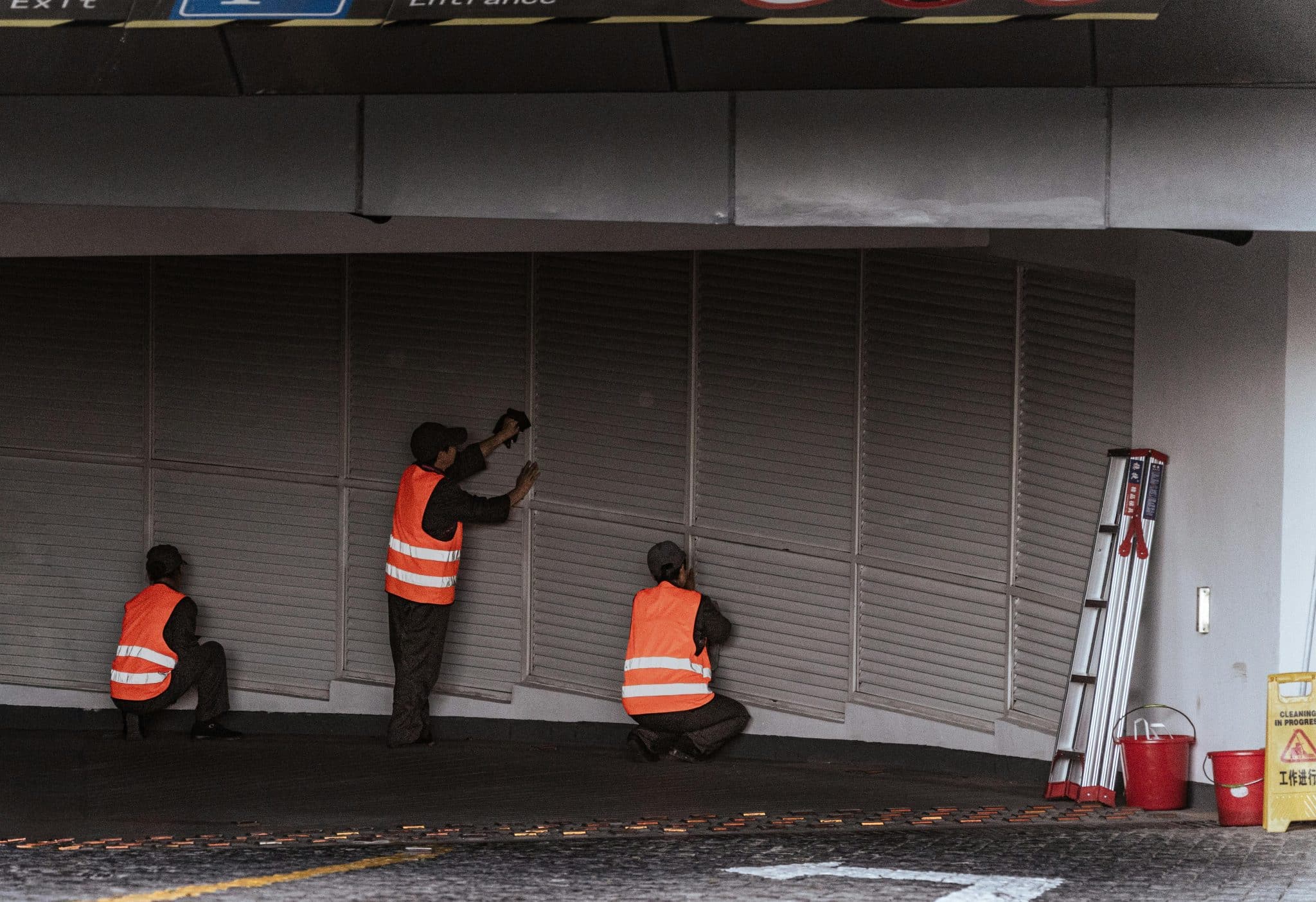Framing your canvas can instantly upgrade it from a casual creation to a polished, gallery-worthy piece. But custom framing often comes with a hefty price tag—sometimes hundreds of dollars.
For artists and hobbyists on a budget, there’s a smarter solution: disassembled floating frames. Affordable and stylish, these kits are made for stretched canvases and create a striking “floating” effect, where the artwork appears to hover inside the frame.
The result? Added depth, dimension, and a clean, modern finish. Available online in various colors and finishes, they offer a professional look at a fraction of the cost. Whether you’re preparing for an exhibit or upgrading your home gallery, floating frames make it easy to showcase your art without overspending.
Did You Know? The Power of Proper Framing
Framing isn’t just about presentation—it’s psychology. Studies show that proper framing can boost the perceived value of artwork by 50–80%.
That’s why professional galleries invest in high-quality frames: they subtly signal importance and craftsmanship. A framed piece feels complete, intentional, and worthy of attention.
Floating frames take this one step further. By creating a clean shadow gap around the canvas, they add dimensional depth and a refined, gallery-style finish.
This effect draws the eye inward and makes the artwork feel more substantial, one reason museums and high-end designers favor this look for modern and abstract pieces.
Whether you’re showcasing a personal painting or preparing art for sale, choosing the right frame can make all the difference.
Step-by-Step Guide to Framing a Canvas
Tools and Materials Needed
| Essential Items | Purpose |
|---|---|
| Floating frame kit | Main component, sized for your canvas |
| Phillips-head screwdriver | For securing brackets and screws |
| Glue | For initial corner assembly (usually included) |
| Hanging hardware | For wall mounting (usually included) |
| Wall hooks/nails | For securing to the wall |
| Level | For ensuring straight hanging |
| Clean cloth | For wiping down components before assembly |
| Spray paint (optional) | For customizing the frame color |
| Picture hanging wire (optional) | Alternative hanging method |
| 3M mounting strips (optional) | No-hole hanging alternative |
Step 1: Selecting the Right Frame
Choose a floating frame that matches your canvas dimensions exactly. Measure your canvas carefully before ordering.
Online retailers like CareUDesign offer various sizes and finishes, including faux wood (black or white) and brushed metal designs.
Select a frame color that complements or contrasts with your artwork for visual impact. Some frames ship assembled, while others come as components—the latter typically costs less. Order well in advance, as shipping can sometimes take several weeks, depending on the supplier.
Step 2: Unboxing and Preparing Components
Carefully unbox all components and lay them out on a clean, flat work surface. Verify that all necessary parts are included: frame pieces, corner brackets, screws, hanging hardware, and glue.
Most kits include detailed instructions specific to your model. Before assembly, ensure all frame pieces are clean and free of dust. If you plan to customize your frame with spray paint, do this now and allow adequate drying time before proceeding.
Step 3: Assembling the Frame Corners
Begin by applying the included glue to the corner joints of the frame pieces. Work on one corner at a time, using a small amount of glue to both connecting surfaces.
The glue typically dries very quickly, so position the pieces accurately on your first attempt. Hold the corners together firmly for about 30 seconds to ensure proper adhesion.
Continue until you’ve connected all four corners to form the complete frame. The glue serves as a temporary hold while you prepare to secure the corners more permanently with brackets.
Step 4: Securing Corner Brackets
After gluing the corners, flip the frame to expose the back side. Locate the L-shaped metal brackets that provide structural stability.
Position these at each corner, aligning them with the pre-drilled pilot holes. Using your screwdriver, fasten the brackets with the provided screws.
Don’t overtighten, as this could damage the frame material. If any corner isn’t perfectly flush, loosen the screws slightly, adjust the positioning, then retighten. Minor gaps at corners are usually not noticeable once the frame is hanging.
Step 5: Preparing Your Canvas
Before inserting your canvas, ensure it’s completely dry and clean. For new paintings, allow adequate curing time according to the paint manufacturer’s guidelines to prevent damage when fitting.
Check that the canvas is stretched properly with no sagging or warping. Remove any protective corner covers from shipping or storage. The back of the canvas should be neat, with staples properly secured and excess canvas trimmed if necessary.
Step 6: Inserting the Canvas
With your frame assembled and secured, carefully flip it so the front faces upward. Gently lower your canvas into the frame, positioning it centrally within the opening.
The canvas should sit against the inner lip of the frame, creating that distinctive “floating” appearance where it seems to hover within the frame rather than sit flush against it.
Take time to ensure the canvas is perfectly centered—measure the spacing from each edge if necessary to achieve proper alignment before securing.
Step 7: Securing the Canvas
Once your canvas is positioned, carefully flip the entire assembly over while supporting both the frame and the canvas to maintain alignment. Locate the pre-drilled pilot holes on the back designed for canvas attachment.
Using the provided screws, secure the canvas to the frame through these holes. While the kit may include four or more screws, using just two on opposite sides often provides sufficient stability.
Don’t overtighten these screws, as this could damage the wooden stretcher bars or cause the canvas to become skewed.
Step 8: Installing Hanging Hardware
With your canvas securely mounted, install the hanging hardware. Most kits include small metal hanging brackets that can be attached either by placing them between the L-brackets and their screws before tightening, or by using the dedicated pilot holes provided for hanging hardware.
Choose the method that provides the most stability for your frame size and weight. For larger frames, consider installing two hanging points rather than just one to distribute the weight evenly and keep the frame level when hung.
Step 9: Hanging Your Framed Canvas
Decide on the ideal location and height for your artwork. Mark where wall hooks should go with a pencil. For heavier frames, locate wall studs or use appropriate anchors for security.
Install the included hooks or your preferred hardware according to the surface type. Position your framed canvas on the hooks, checking with a level to ensure it hangs straight.
Step back periodically to view from different angles and distances. Once satisfied, make any final adjustments to ensure your beautifully framed artwork is perfectly displayed.
Video Tutorial
I want to give credit to Wild Creates for their informative video, which served as a reference for this guide.
Alternate Hanging Methods
Not every wall or artwork situation calls for the same mounting approach. If the traditional bracket-and-hook setup doesn’t work for your space or aesthetic, here are some alternate methods to consider:
1. 3M Command Strips
Best For: Lightweight frames and renters
Pros: No holes, easy to apply and remove
Cons: Limited weight capacity
Tip: Always use multiple strips to distribute the weight evenly. Ensure the wall surface is clean and dry for maximum adhesion.
2. French Cleats
Best For: Heavy or large-format canvases
Pros: Secure and level; great for long-term installs
Cons: Requires more tools and precision
How It Works: Two interlocking, angled wood or metal pieces hold the frame securely to the wall. One is attached to the frame, the other to the wall.
3. Sawtooth Hangers
Best For: Medium-weight pieces
Pros: Easy to install, low-profile
Cons: Can shift slightly if bumped
Tip: Use a level when placing the nail to keep the frame from tilting.
4. Picture Hanging Wire
Best For: Flexibility in positioning
Pros: Allows for easy leveling adjustments once hung
Cons: May tilt over time if not balanced properly
Installation: Attach the wire between the two D-rings secured on each side of the frame back.
5. Gallery Rails
Best For: Multiple artworks or changing displays
Pros: Adjustable without wall damage, ideal for art walls
Cons: Requires installation of ceiling or upper-wall-mounted rail
Note: Common in galleries and modern interiors—ideal for those who like to rotate art pieces regularly.
Keep It Looking New: Frame & Canvas Care Tips
Regular Cleaning
Use a damp microfiber cloth to wipe the frame, avoiding harsh cleaners, especially on faux wood. For the canvas, gently dust with a dry, soft brush made for artwork. Never apply moisture directly. Handle the piece by the edges to avoid transferring oils from your fingers.
Environmental Considerations
Display your canvas away from direct sunlight and humidity. Avoid placing it near radiators, bathrooms, or kitchens to prevent fading, warping, and buildup from grease or smoke. Choose areas with stable temperature and low UV exposure for best preservation.
Secure Mounting Verification
Check hardware every few months to ensure brackets and screws are tight. Look for sagging or loose components that may indicate mounting stress. Reinforce any shifting parts to avoid falls or damage.
Transportation Protection
Wrap the canvas in acid-free tissue and bubble wrap before moving it. Always carry it upright; it should never be laid flat. Use corner protectors for long trips and avoid temperature extremes that may affect tension or frame integrity.
Frame Refresh Techniques
Use touch-up markers for minor frame wear. For a full refresh, remove the canvas and apply several light coats of spray paint suited to the frame material. Clean hidden spots and check for damage before reassembling.
Framing Fails to Avoid a Flawless Finish
| Issue to Avoid | Better Alternative |
|---|---|
| Overtightening screws | Hand-tighten until snug, then give only a quarter turn more |
| Using the wrong-sized frame | Measure canvas dimensions precisely before ordering |
| Hanging without proper anchors | Use anchors rated for the weight of your framed piece |
| Touching the canvas surface | Handle only by the frame edges when moving |
| Rushing assembly | Take time to align pieces precisely before securing |
| Using harsh cleaning chemicals | Stick to dry dusting or a slightly damp microfiber cloth |
Conclusion
Framing your canvas doesn’t have to be expensive to look professional. Affordable floating frames offer a sleek, gallery-style upgrade that’s perfect for artists, hobbyists, or anyone wanting to display their work with impact.
With just a few simple steps, you can turn plain canvases into striking focal points. Available in a range of sizes, colors, and finishes, these frames suit any art style and cost just a fraction of custom framing.
While budget kits may have minor flaws, the overall effect is polished and impressive. For best results, order in advance and keep a few frames on hand for your most-used sizes. With the right frame and a little care, your artwork will not only stand out—it’ll truly shine.

















